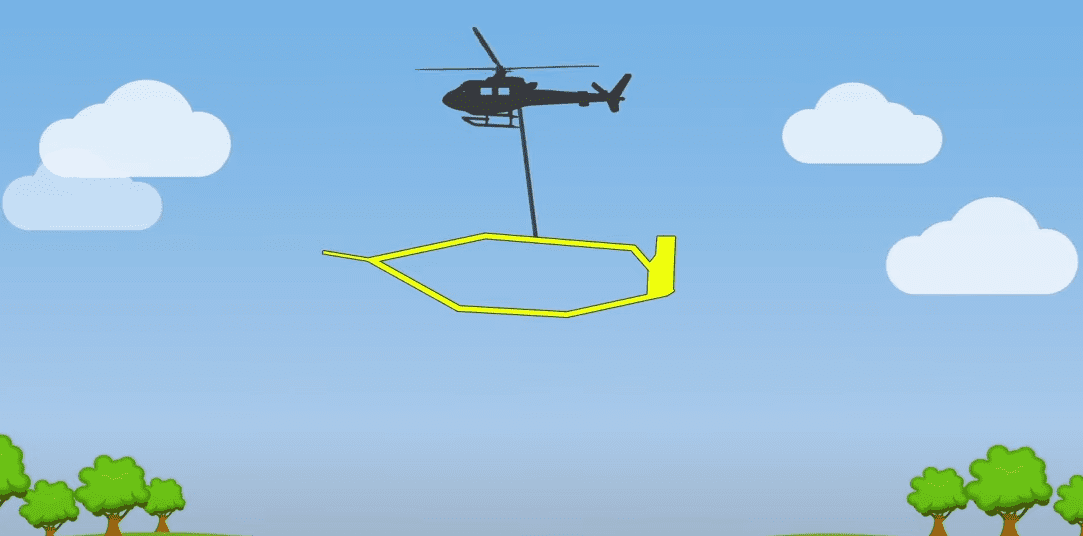Challenged by ongoing drought and extreme weather swings, California’s Department of Water Resources (DWR) has been developing and using new data and forecasting tools to better anticipate and manage available water supplies.
Airborne Electromagnetic Data: An “MRI” for subsurface water.
According to DWR , a new technology the agency is employing throughout the state is collecting airborne electromagnetic (AEM) data. The AEM method is an innovative helicopter-based technology likened to taking an MRI of the subsurface, which helps DWR to better understand underground geology. The resulting underground images provide local groundwater sustainability agencies (GSAs) with data to identify priority areas for recharging groundwater.
, a new technology the agency is employing throughout the state is collecting airborne electromagnetic (AEM) data. The AEM method is an innovative helicopter-based technology likened to taking an MRI of the subsurface, which helps DWR to better understand underground geology. The resulting underground images provide local groundwater sustainability agencies (GSAs) with data to identify priority areas for recharging groundwater.
DWR’s initial project area includes about 100 groundwater basins that supply most of the groundwater pumped in California. Just a year in, DWR has collected AEM data in about 85% of the planned project area. The agency anticipates that by the end of next year, data will be collected in the remaining high and medium priority groundwater basins in the state.
Public Access to AEM Data.
DWR releases the data to the public as it becomes available.
“Getting this information into the hands of local groundwater sustainability agencies is a top priority,” said Steven Springhorn, Technical Assistance lead for DWR’s Sustainable Groundwater Management office . “As we face this drought and deal with ongoing climate change, local agencies need up-to-date information to help them manage groundwater sustainably. The better we collectively know about our natural infrastructure, our aquifers, and how those aquifers are connected to each other and to the ground surface, the better we can implement Sustainable Groundwater Management Act projects and actions, such as recharge.”
. “As we face this drought and deal with ongoing climate change, local agencies need up-to-date information to help them manage groundwater sustainably. The better we collectively know about our natural infrastructure, our aquifers, and how those aquifers are connected to each other and to the ground surface, the better we can implement Sustainable Groundwater Management Act projects and actions, such as recharge.”
DWR recently developed and launched the state-of-the-art AEM Data Viewer , which allows the public to view the AEM data online, in a user-friendly format, as soon as it becomes available. This new GIS-based tool displays AEM data in a three-dimensional space and allows the user to interact with the data by zooming in and viewing the data from various angles. The tool can be accessed on a computer or mobile phone and does not require data to be downloaded or the use of specialized software. DWR will continue to make improvements to the viewer in the coming months to provide additional data visualization options.
, which allows the public to view the AEM data online, in a user-friendly format, as soon as it becomes available. This new GIS-based tool displays AEM data in a three-dimensional space and allows the user to interact with the data by zooming in and viewing the data from various angles. The tool can be accessed on a computer or mobile phone and does not require data to be downloaded or the use of specialized software. DWR will continue to make improvements to the viewer in the coming months to provide additional data visualization options.
Datasets and data reports from the AEM surveys become publicly available about six to twelve months after the surveys are completed and are published on the California Natural Resources Agency Open Data Portal and added to the AEM Data Viewer. Currently, DWR has datasets published for the Salinas Valley, Cuyama Valley, Northern California, and North San Francisco Bay Area groundwater basins. For more information is available at the AEM website .
.


Leave a Reply